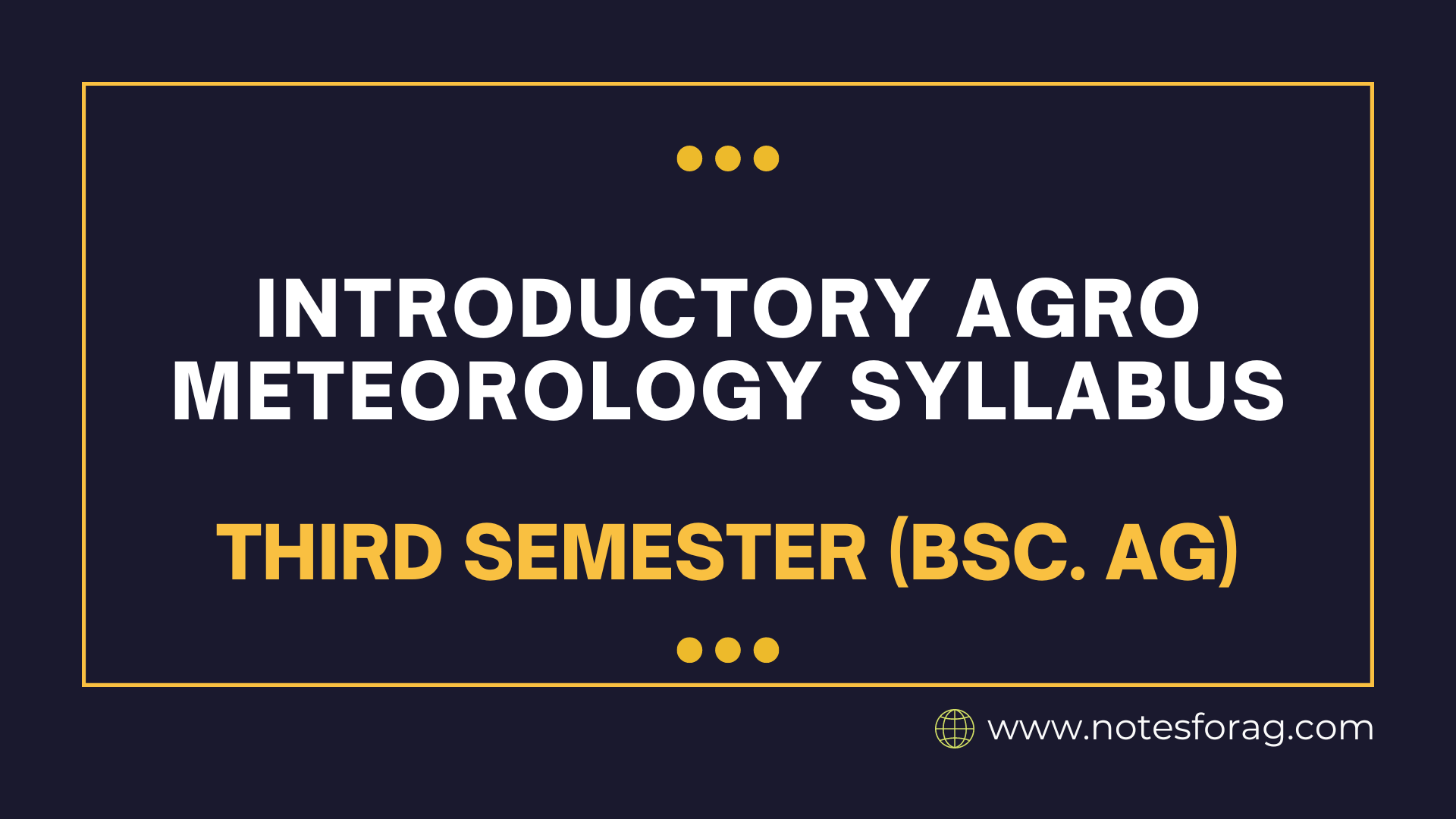| Course Code | AMT 201 |
| Course Title | Introductory Agro meteorology, Genesis and Classification |
| Credit Hour | 2 (2+0) |
| Full Marks | 50 |
| Theory | 50 |
| Practical | 0 |
Objectives
Upon the completion of this course, the students will be able to know atmospheric processes that produce various climate and weather conditions, their agricultural significance, and use of agro-meteorological forecasting tools in agricultural decision making.
Syllabus For Introductory Agro meteorology in BSc. Agriculture
Definitions, scope and role of meteorology in agriculture; meteorological variables and measurements: housing for temperature and humidity measurement; statistical calculations of meteorological variables; evaporation: factors affecting evaporation and transpiration rates and measurements of evapotranspiration demands of the crop; precipitation: form, measurement, and significance in crop production; agro-meteorological normals of various crops, crop zonation, human influence on climate change and greenhouse effect on global warming and agriculture; elements and types of weather and climate forecasting for agriculture; use of remote sensing(RS) and geographic information system(GIS) techniques in evapotranspiration estimation; satellite systems; weather, climate and drought classifications; theory and practices of automatic weather station technologies.
Course Outline
A. Theory Introductory Agro meteorology in BSc. Agriculture
References
Harpal S. Mavi and Graeme J. Tupper. 2004. Agro-meteorology: Principles and Applications of Climate Studies in Agriculture. The Haworth Press, Inc.
Harpal S. Mavi. 1998. Introduction to Agro-Meteorology. Oxford and IBH Publishing Co. New Delhi
Guidelines for Curricula in Agricultural Meteorology. World Meteorological Organization (WMO) No. 258. Geneva – Switzerland. 2008
Rao G.S.L.H.V. parasad 2008. Agricultural Meteorology, Prince Hall of India Pvt. Ltd. New Delhi, India.
Sabins J.R. (latest edition). Remote Sensing Principles and Interpretation. W.H. Freeman and Co.
Heywood, Ian, Corenelius Sarah and Carver Steve. 1999. An Introduction to Geographic Information System. Addison-Wesley-Longman
Chrisman Nicholas. 1997. Exploring Geographic Information System. John Wiley & Sons.

